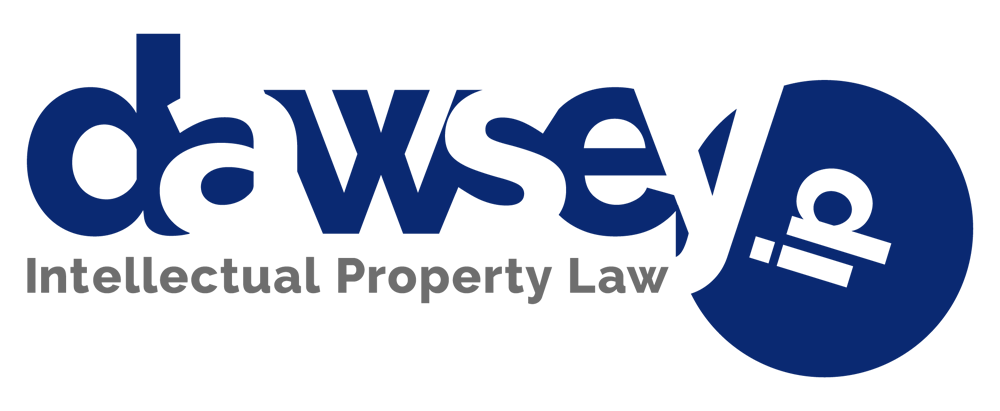
Is Advertising Art? Not Always in Copyright
© 2003, Dawsey Co., LPA
October 2003
After a complex double trip through the Ninth Circuit Court of Appeals, the well-know blue Skyy Vodka® bottle has highlighted issues that point to a limited availability of copyright protection for advertising photographs.
Almost ten years ago, a photographer took the first of what has become a staple of print advertising; a photograph of the bright blue Skyy® bottle, viewed straight on, with the level of the camera even with the bottle, and a flat, even lighting. Subsequently, the maker commissioned other photographers to shoot other ads, where the bottle looked very much like the original.
Can a Photograph be a Derivative Work?
In the original proceedings, Skyy® defended charges of copyright infringement on the grounds that the original photographer’s work could not be infringed because it was not entitled to copyright. Even though photographs have been held subject to the copyright laws since at least 1884, and that advertising photographs have specifically been found eligible for copyright, the distiller argued that the photograph was not an original, but in fact, a “derivative” work. The rules for a derivative work are considerably different from those for original works. While an original work needs only a slight creative aspect, and will be infringed by a “substantial similarity” to a copy, derivatives face a stiffer test. A derivative work is not entitled to copyright protection unless the original aspects of the derivative are more than trivial, and granting copyright to the derivative will not interfere with the right of the owner of the original to create derivative works from its original.
Skyy® argued that the immediate resemblance of a photograph to their bottle design, and the use of standard techniques of photo advertising were so predominant, that the required level of originality for a derivative could not be met. Also, they argued that granting copyright to the photographs would effectively prevent the bottle owner from making any photographs of the bottle shape and label. The court disagreed, sending the case back to the trial court, finding that Skyy® could not invoke the derivative doctrine because their original work, the bottle, was not sufficiently artistic to qualify for copyright. The fact that the bottle might embody certain trademarks and trade dress was insufficient, as an absolute requirement for finding a derivative must be that the original work itself must be subject to copyright.
Merger and Scenes a Faire
Skyy® emphasized a different point on it second round in the trial court, winning a decision that shows the limits of copyright protection for advertising photographs. The distiller argued that even if the photographs were subject to copyright, the limitations of advertising technique and use of standard devices implicated doctrines of “merger” and “scenes a faire” that made all photographs of the bottle essentially the same, and thereby destroyed originality.
“Merger” is a doctrine more often seen in computer software copyright issues, where one company tries to protect either its screens or its sequence of menu commands. Briefly put, if an idea can only be expressed in a very limited number of ways, then the creative idea and the functional expression have “merged,” and allowing a copyright would unfairly grant a monopoly over an entire class of expression. For example, a mapmaker may have no practical way to indicate an airport on a map, other than a small drawing of an airplane. In such a case, the idea and expression have merged, and all mapmakers may use that symbol.
The “scenes a faire” doctrine holds that certain conventions have become so essential in creative works that their appearance is no longer evidence of originality. For example, one could not argue for infringement of a western story by arguing the presence of a noble sheriff, a shootout with the bad guys, or a dance hall girl with a heart of gold; as these are all well-worn plot devices that are commonplace in the genre.
In the Skyy Vodka case, the Ninth Circuit found that these closely related doctrines barred a finding of infringement. By subtracting the similarities between the works that were scenes a faire, that is, required by the nature of photographing liquor bottles, the range of protected elements became very narrow. As a result, the fact that there may have been substantial similarity between the photographs was not sufficient to support an infringement action, and that anything less than virtual identity between the works would not be infringement. As a necessary result, this decision suggests that in “creative” areas where the range of expression is limited, there may be less copyright protection than the artists involved believe.
Lessons for Creative Artists
The Skyy Vodka decision should put creative artists on notice that copyright protection is not as simple as filing the required papers with the Library of Congress. Even in areas, like photography, that have long been protected under copyright law, significant areas of exception exist that can block copyright. Particularly when working in areas where artistic conventions are common, as in advertising, care must be taken to maintain a higher level of originality. Lastly, copyright protection may not be enough in these areas; and artists need good written agreements with those parties commissioning work in order to make sure that their rights are protected.
